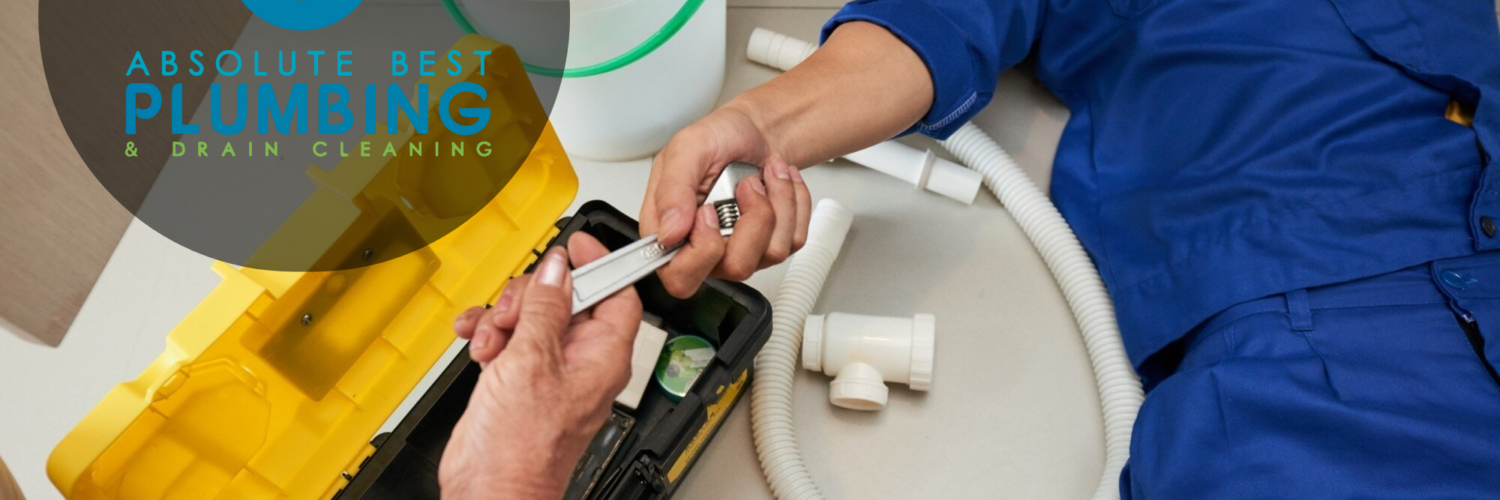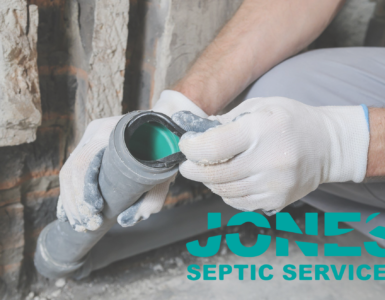Water line repair is a critical issue for property owners, especially in areas prone to ground shifts, aging infrastructure, or seasonal storm impacts like Orlando, Florida. As underground water lines age or face pressure from shifting soil and extreme weather, the likelihood of cracks, leaks, or complete pipe failure increases. This not only disrupts essential water service but can also lead to property damage and higher repair costs if not addressed promptly.
Understanding the primary factors that affect water line repair costs can help property managers and homeowners make informed decisions, allocate budgets appropriately, and avoid unexpected financial burdens. Whether the issue stems from corrosion, root intrusion, or outdated materials, evaluating these variables in advance empowers owners to plan effectively and respond quickly to minimize disruption.
From the type of pipe material used and depth of the line, to labor logistics and emergency response requirements, every element plays a role in determining the overall repair expense. Additionally, location-specific factors in places like Orlando, Florida, such as local permitting rules, soil composition, and climate-related risks, can further complicate the process and drive up water line repair costs. This article outlines the most important elements influencing the total cost of repairing water lines, offering a clearer picture of what to expect when facing a water line issue.
Type and Material of the Pipe
Common materials used in Florida
In older properties, water lines were often made of galvanized steel or polybutylene, both of which degrade over time. More modern systems use copper, PVC, or PEX. The material not only affects the lifespan of the system but also determines the cost of both parts and labor.
- Copper pipes: Durable but expensive and labor-intensive to repair
- PVC/CPVC: Inexpensive and common, but less durable under high pressure
- PEX: Flexible, resistant to scaling and corrosion, relatively affordable
Replacement using modern alternatives may result in better long-term performance, especially in Florida’s moist, shifting soils. When failures occur, pipe replacement Orlando is frequently the recommended solution in neighborhoods with aging infrastructure.
Accessibility of the Line
Depth and location
The depth and location of the water line significantly influence how complex and expensive a water line repair project can become. Pipes that are buried deeper underground naturally require more extensive digging and equipment to reach, which increases labor time and cost. When these pipes are located beneath permanent structures, such as concrete driveways, patios, sidewalks, or even building foundations, the job becomes even more complicated. Contractors may need to cut through hard surfaces, shore up surrounding areas to prevent collapse, and take extra precautions to protect nearby infrastructure.
These additional steps translate into higher water line repair costs, not just for excavation but also for restoration of the disturbed surfaces. Property owners in places like Orlando, Florida should also be aware that local utility codes and permitting requirements may impact how and when work can be performed, adding further complexity depending on the depth and placement of the damaged line.
Urban vs. suburban environments
The setting, urban or suburban, also plays a crucial role in determining accessibility. In densely populated urban environments, water line repair efforts often involve working in tight quarters, coordinating with municipal services, and navigating congested roadways. Repair teams may be required to implement traffic control plans, obtain special access permits, and schedule work during off-peak hours, all of which can increase project duration and costs.
In contrast, suburban settings might allow for easier access to the line with less surface disruption. However, challenges can still arise depending on local landscaping features, tree root systems, or soil conditions like sandy or clay-heavy ground, which are common in Orlando, Florida. Even in seemingly simpler environments, unexpected complications can arise that affect both the timeline and the water line repair costs.

Extent of Damage
Spot repair vs. full replacement
The overall extent of damage to a water line is one of the most decisive factors in determining the scope and cost of the repair. In many cases, a small leak, loose joint, or minor crack can be resolved with a simple spot repair. These targeted fixes are less invasive, requiring fewer materials and less time, making them a more cost-effective option for homeowners and property managers alike.
However, when the damage is more widespread—such as significant corrosion, longitudinal cracking, or long-term wear—full replacement may be unavoidable. This is particularly common in older homes with galvanized steel or outdated PVC piping, which may no longer meet current building codes or performance standards. Additionally, if tree roots have infiltrated the pipe or surrounding soil erosion has weakened the pipe’s structural integrity, the only viable solution is often to replace the affected section entirely.
Not only does full replacement require more materials and excavation, but it can also disrupt service for a longer period and necessitate a more extensive permitting process, especially in municipalities like Orlando, Florida. These factors all contribute to higher water line repair costs.
Seasonal factors and soil movement
The need for water line repair service Orlando increases significantly during the rainy season. Excessive rainfall can saturate the ground, making it unstable and more prone to shifts. As soils expand and contract with moisture changes, they can create pressure points along buried pipes. This ground movement can stress joints, crack older lines, or expose already vulnerable areas, leading to sudden failures.
For properties in Orlando, Florida, where seasonal storms and heavy rainfall are common, proactive monitoring and early intervention are key to avoiding large-scale water line issues. Waiting too long can turn a manageable spot repair into a costly full replacement, compounding the overall water line repair costs.
Emergency Service Requirements
When water line failures happen during nights, weekends, or holidays, they often demand immediate attention to prevent water loss, flooding, or structural damage. These incidents fall under emergency services, which can significantly increase water line repair costs due to urgency, labor premiums, and logistical complications.
Unlike scheduled repairs, emergency calls may require contractors to respond within hours, sometimes minutes, which typically involves premium labor charges, after-hours staffing, or the need to reroute ongoing jobs. If excavation or replacement is necessary, expedited permit processing may also be required, particularly in municipalities like Orlando, Florida, where compliance with local utility and safety regulations is non-negotiable. These additional layers of urgency and regulation contribute to higher service fees, even if the actual repair is relatively minor.
In regions prone to unpredictable weather patterns, such as Orlando, seasonal storms can lead to sudden ground movement, flooding, and tree root stress, conditions that make water line repair service Orlando a common necessity. When a pipe fails over the weekend or during a major storm, property owners are often left with little choice but to rely on 24/7 emergency plumbing providers.
While the timeliness of response can prevent further water damage, mitigate mold growth, and restore service quickly, it does raise the short-term service cost. Still, in most cases, the added expense of an emergency call is preferable to the long-term consequences of delaying critical repairs. Property owners should consider including an emergency plumbing line item in their annual maintenance budgets, especially those located in high-risk areas like Orlando, Florida.
Soil and Environmental Conditions
Sandy or unstable soil
The type of soil surrounding a damaged water line plays a significant role in determining both the approach and cost of the repair. In Florida, and particularly in areas like Orlando, sandy subsoil is common, and while it may seem easier to dig through, it actually presents a number of challenges. Loose, granular soils often require additional shoring and stabilization measures during excavation to prevent cave-ins or erosion. These safety precautions, including trench boxes and retaining barriers, not only extend the repair timeline but also raise water line repair costs due to added labor and equipment.
In some cases, sandy soil can shift quickly once disturbed, creating voids or backfill issues that must be addressed before finalizing the water line repair. This type of environment demands contractors with specialized experience and knowledge of local geological conditions to ensure the repair is safe, compliant, and long-lasting.
High water tables
Another major environmental factor in Orlando, Florida is the prevalence of high water tables. In areas where groundwater levels are elevated, excavation becomes more complicated and resource-intensive. Before any water line repair can take place, crews may need to install temporary dewatering systems, such as sump pumps or drainage fields, to keep the trench dry and safe for workers.
High groundwater doesn’t just create logistical challenges; it can also accelerate the deterioration of existing pipes. Older metal lines, in particular, are vulnerable to constant moisture exposure, which speeds up rusting and corrosion. As a result, properties in high-water-table areas often face more frequent repairs or even complete pipe replacements, all of which add to the overall water line repair costs.
Environmental protections
Beyond the physical terrain, environmental regulations can also impact the cost and complexity of water line projects. If the affected area is near wetlands, protected tree zones, or designated historical districts, repair crews must often obtain special permits before breaking ground. These permits may require environmental assessments, site inspections, or approval from multiple local agencies.
Additionally, contractors working in these zones may need to use non-invasive methods, reroute water lines to avoid protected areas, or employ specialized labor trained in environmentally sensitive excavation techniques. These added measures, while essential for compliance, can significantly extend project timelines and increase the total cost of water line repair service Orlando.
Property managers and homeowners should be proactive in identifying any nearby environmental designations before initiating repair work, especially in ecologically diverse regions like Orlando, Florida. Factoring in these conditions early on can help prevent costly delays and ensure that all repairs are performed safely, legally, and efficiently.
Plumbing Layout and Age of the System
Complexity of layout
In properties with complex plumbing systems, repairs may require tracing multiple lines to identify leaks or pressure drops. Cross-connections, outdated mapping, or undocumented modifications can all add time and labor.
Age-related vulnerabilities
Older plumbing systems are more likely to suffer from multiple weak points, requiring broader inspections or upgrades. Even minor repairs can reveal hidden corrosion, encouraging full system replacements.
Homeowners frequently transition from partial repairs to full plumbing services Orlando when assessments uncover widespread vulnerability.
Municipal Codes and Permitting
In any city, compliance with local building regulations is a fundamental part of any underground repair, and Orlando, Florida is no exception. Municipal codes are designed to ensure the safety, durability, and environmental responsibility of water line repair projects. However, these rules can also add layers of complexity, especially when it comes to timelines, costs, and legal requirements.
For most significant underground plumbing work in Orlando, securing a permit is mandatory before any excavation or pipe replacement begins. This process includes submitting project details, obtaining approvals from relevant departments, and in some cases, scheduling inspections at multiple stages of the repair. These steps are crucial for ensuring that the water line repair meets trench safety standards, follows depth and material specifications, and uses code-compliant materials. But each of these requirements can also add delays and contribute to higher water line repair costs.
Additionally, working without a permit, even in the case of an emergency, can lead to regulatory issues. If a water line failure occurs after hours or during a weather event and emergency work must begin immediately, retroactive permitting is often necessary. This means the contractor or property owner must file for approval after the fact, sometimes facing penalties or additional fees. In some cases, inspectors may require the repaired line to be reopened for verification, adding further expense and disruption.
This is why working with experienced professionals who understand the permitting process in Orlando, Florida is essential. They can help streamline documentation, anticipate inspection needs, and avoid unnecessary delays. Property managers and homeowners should also be aware that each municipality may have slightly different codes, especially when work spans multiple parcels or utility zones, making local expertise invaluable to keeping water line repair service Orlando both compliant and cost-effective.
Equipment and Labor
Specialized tools
Repairs that involve trenchless technology, pipe-bursting methods, or hydro excavation require specialized equipment and skilled operators. While these technologies may reduce surface disruption, they often cost more upfront.
Labor expertise
Highly skilled plumbers with certifications for underground utilities, leak detection, or excavation safety command higher wages. However, their expertise can also reduce mistakes and speed up the repair.
Routine checks such as faucet repair installation Orlando or fixture upgrades can sometimes identify broader issues early, reducing future repair scope.
Impact of Indoor Fixtures and Appliances
Though not always obvious, malfunctioning fixtures like toilets or water heaters can signal upstream issues that impact water line performance. Interior signs such as low water pressure, strange noises, or discoloration may point to outdoor pipe concerns.
Timely attention to clogged toilet repair services Orlando or Orlando Water Heater repairs can limit complications and alert homeowners to larger problems early on.

Utility Coordination and Property Features
In many water line repair scenarios, especially in densely developed residential or commercial areas, the repair site is surrounded by other critical underground infrastructure. Gas lines, sewer mains, fiber optic cables, and electrical conduits may all be located near or directly above the damaged pipe. This overlap requires meticulous utility coordination to ensure that digging operations don’t disrupt adjacent services or create safety hazards.
Before any excavation begins, coordination with 811 or local utility marking services is legally required in Orlando, Florida. These services identify and mark existing underground lines, allowing contractors to dig safely without damaging other systems. However, scheduling these inspections and receiving clearances can take time, especially in high-demand seasons or during widespread weather events. This coordination can delay the project and increase water line repair costs due to added labor, permit extensions, or rescheduled equipment use.
Furthermore, if a water line repair involves working near high-risk utilities such as gas lines, the process may require additional safety personnel, spotters, or even a representative from the utility company to be onsite during excavation. Each of these precautions, while necessary, adds both cost and logistical complexity.
In addition to utility lines, individual property features can further complicate repairs. Elements like in-ground pools, wooden decks, patios, or sprinkler systems may limit access to the damaged pipe or require partial deconstruction to proceed with the repair. In such cases, contractors must carefully plan workarounds to minimize impact on landscaping and hardscaping, often using hand tools or trenchless methods in sensitive areas.
These features not only increase repair time but may also require restoration work once the water line repair is complete, such as replacing pavers, reseeding lawns, or reconfiguring irrigation lines. For homeowners and property managers in Orlando, Florida, these additional steps can significantly affect overall water line repair costs, especially if premium materials or customized property features are involved.
Understanding the full scope of potential complications, both underground and above ground, helps ensure more accurate budgeting and fewer surprises during the repair process.
Use of Preventive Technologies and Monitoring
As water infrastructure becomes more sophisticated, preventive technologies are playing a growing role in reducing both the frequency and severity of water line repair needs. For property owners and managers in areas like Orlando, Florida, where seasonal changes and soil conditions contribute to water line vulnerability, adopting smart monitoring tools can significantly lower long-term maintenance and emergency response costs.
Modern water systems now include a range of intelligent devices designed to monitor performance and detect irregularities in real time. By transitioning from a reactive to a predictive maintenance model, property owners can identify early signs of failure—such as pressure drops, flow disruptions, or minor leaks, before they evolve into full-scale pipe breaks or property damage.
Some of the most impactful technologies include:
- Acoustic leak detection: This method uses specialized sensors to listen for the unique sound signatures created by escaping water. Because sound travels differently through water and pipe materials, trained technicians can pinpoint underground leaks without digging, saving time and minimizing disruption.
- Pressure loggers: These devices monitor fluctuations in pipe pressure over time, helping to identify unusual trends or recurring stress points. Sudden drops or irregular cycles can signal the early stages of a line failure, allowing for targeted water line repair before a major issue develops.
- Smart meters: Installed at the point of use, smart water meters track consumption in real time and alert property owners to usage anomalies. A spike in water usage during off-hours or consistent slow leaks can be a red flag, prompting immediate inspection before the problem escalates.
Incorporating these tools into a water management strategy not only enhances operational awareness but also supports compliance with evolving municipal standards in places like Orlando, Florida. Additionally, smart systems may help streamline insurance claims, document repair timelines, and assist contractors in isolating issues faster, ultimately reducing water line repair costs through earlier intervention and reduced labor.
Forward-thinking property managers and homeowners who invest in these technologies position themselves to avoid sudden disruptions, prolong pipe life, and plan repairs with greater precision. As infrastructure ages and environmental pressures increase, the shift toward predictive maintenance becomes not just beneficial, but essential.
Geographic and Climate Considerations
Florida’s subtropical climate, frequent thunderstorms, and seasonal hurricanes all contribute to higher-than-average repair needs. Expanding roots from native vegetation, heavy rainfall, and soil erosion amplify wear on water lines.
Awareness of regional issues can help property owners prepare for maintenance cycles and seasonal inspections, rather than waiting for emergency breakdowns.
Integrating Authoritative Insights
The U.S. Department of Energy – Water Heating program provides guidance on water heating infrastructure that can complement strong water line performance.
EPA WaterSense promotes water conservation and leak detection, helping property owners reduce waste and identify system inefficiencies.
ENERGY STAR – Residential Water Heaters offers standards for selecting efficient, long-lasting water heating equipment, which plays a role in minimizing downstream pipe stress.
Water line repair costs are shaped by a variety of interrelated factors, from technical specifications and local codes to emergency needs and soil conditions. Understanding these variables allows Orlando property owners to better anticipate costs, plan upgrades, and reduce the frequency and severity of repairs over time.





